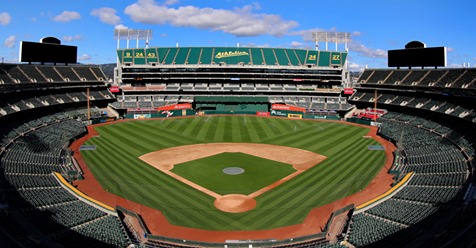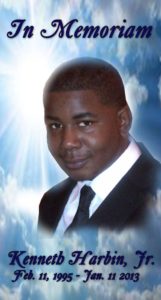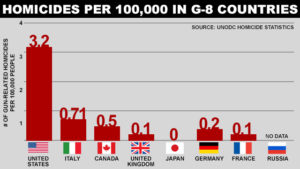
Keep the A’s at the Coliseum
The Oakland City Council is considering whether to sell its half interest in the Oakland Coliseum property to the A’s at the below‑market rate of $85 million. The Coliseum is some of the most valuable land in the entire Bay Area. This public land should not be handed over without full, public deliberation – especially when the sale would be at a discounted price. At a minimum, the City must require that, if the A’s buy the land, they must actually build their stadium at the Coliseum site.
Oakland Always Gets the Short End of the Deal
Among American cities with major‑league sports franchises, Oakland has ended up on the short end of the stick more than any other – at least financially speaking. The Raiders moved to Las Vegas, leaving behind a $65 million tab for Oakland taxpayers. When the Warriors left for San Francisco, they left us on the hook for $40 million in arena improvements.
The A’s claim their stadium and the proposed gondola-in-the-sky will be privately-financed. The truth is Oakland taxpayers will be on the hook for at least $200 million. That is what the A’s and Mayor Schaaf have said it will cost to upgrade the roads and bridges for the stadium and the environmental clean-up at the Port.
The A’s say that Howard Terminal is an “underutilized” essentially abandoned site that can be partitioned off from the Port. The truth is Howard Terminal is part of the third largest port on the West Coast and the ninth largest port in the country. It is actively utilized for Port activities, such as trucking, shipping and storage. Fifty railroad trains a day run across Howard Terminal.
Additionally, the Howard Terminal project threatens jobs at the Port which are primarily held by African American residents and union members. The ILWU has a long and treasured history of economic empowerment for Black workers and their families.
East Oakland Is The Best Option
Unlike Howard Terminal, the Coliseum site requires no additional review, has minimal red tape, offers plentiful public transportation options, already has $40 million available for upgrading the BART Station and sits in a part of Oakland that is long overdue for economic stimulus. A recent poll found that 62% of us want the A’s to stay and build a new stadium at the Coliseum.
Keeping the A’s in East Oakland and using a new ballpark as a magnet for a fully realized housing, entertainment and sports complex that benefits the community is the only thing that makes sense.
The A’s claim they will “deliver a bold vision and real benefits specifically tailored to the goals and needs of East Oakland” and “revitalize the Coliseum with new economic, cultural, and recreational programming.” They say they plan to “accelerate the redevelopment of the Coliseum.”
As a resident of East Oakland for decades, I have not seen the A’s commitment to uplifting East Oakland. In fact, they have consistently tried to relocate to other places. The A’s have been at the Coliseum since 1968 and billionaire John Fisher has owned the A’s since 2005. What real benefits “tailored to the goals and needs of East Oakland” have they already provided? Is there a written plan to “accelerate the redevelopment of the Coliseum?”
After a long history of broken promises to East Oakland, how can residents benefit from more empty words and pretty pictures that do not include a new ballpark to anchor revitalization of this community?
The A’s have brought home multiple championships to Oakland during their decades in the Town and have a dedicated fan base here. The City Council should absolutely work to keep the team in Oakland – but not by recklessly giving away public land or millions of taxpayer dollars.
What Can You Do?
If you want to oppose the backroom sale of public land to billionaire John Fisher, e‑mail the Oakland City Council at [email protected].

 Or whether to accept Mayor Libby Schaaf‘s goal to reduce violent crime by a mere 10% using the same old failed methods. A coalition of community groups along with Councilmembers Lynette McElhaney, Larry Reid and Rebecca Kaplan are calling for people to show up at the Oakland City Council meeting. If you cannot make the meeting, you should contact Councilmembers
Or whether to accept Mayor Libby Schaaf‘s goal to reduce violent crime by a mere 10% using the same old failed methods. A coalition of community groups along with Councilmembers Lynette McElhaney, Larry Reid and Rebecca Kaplan are calling for people to show up at the Oakland City Council meeting. If you cannot make the meeting, you should contact Councilmembers  Fast forward to January 11, 2013. My friend Brenda Harbin‘s beloved grandson, Ken Harbin, Jr. is shot and killed. Four people are killed that day in Oakland. In the wake of Ken’s murder, we stand on street corners with
Fast forward to January 11, 2013. My friend Brenda Harbin‘s beloved grandson, Ken Harbin, Jr. is shot and killed. Four people are killed that day in Oakland. In the wake of Ken’s murder, we stand on street corners with 
 A Crisis of Corruption: How Long Has it Been Like This!?! We are shocked by the recent news that police officers have engaged in sex trafficking of a teenager across 6 jurisdictions. In fact, the current crisis of corruption is the latest in a history of corruption within the Oakland Police Department. Here are a few examples.
A Crisis of Corruption: How Long Has it Been Like This!?! We are shocked by the recent news that police officers have engaged in sex trafficking of a teenager across 6 jurisdictions. In fact, the current crisis of corruption is the latest in a history of corruption within the Oakland Police Department. Here are a few examples.